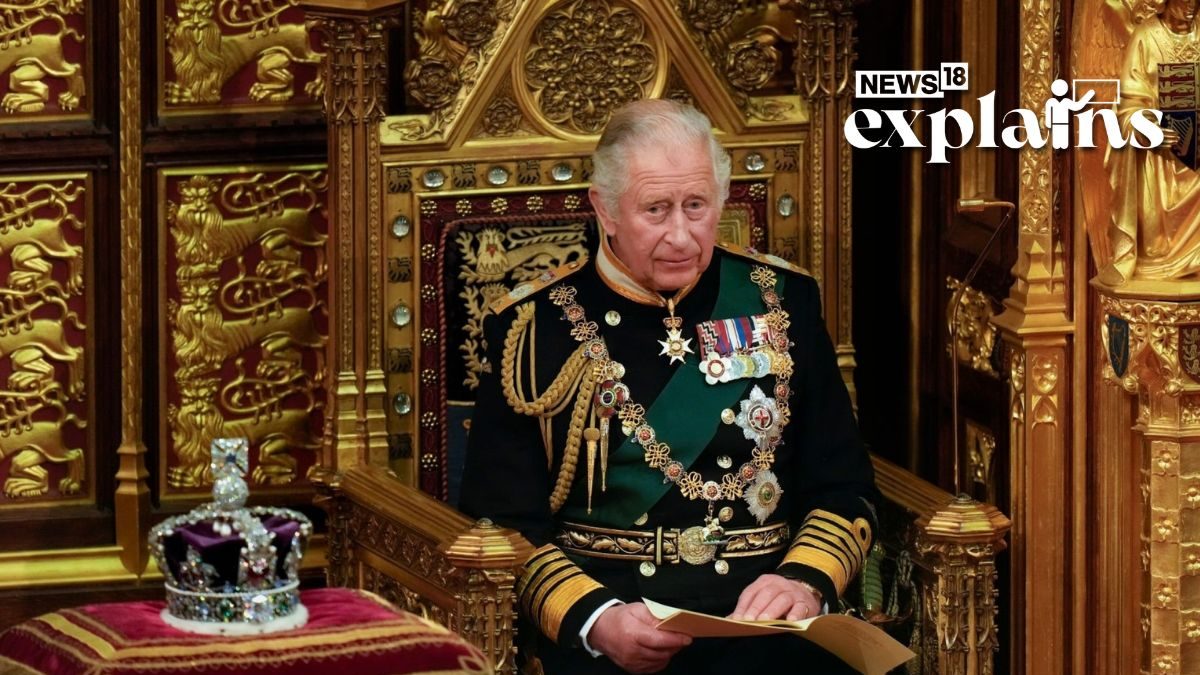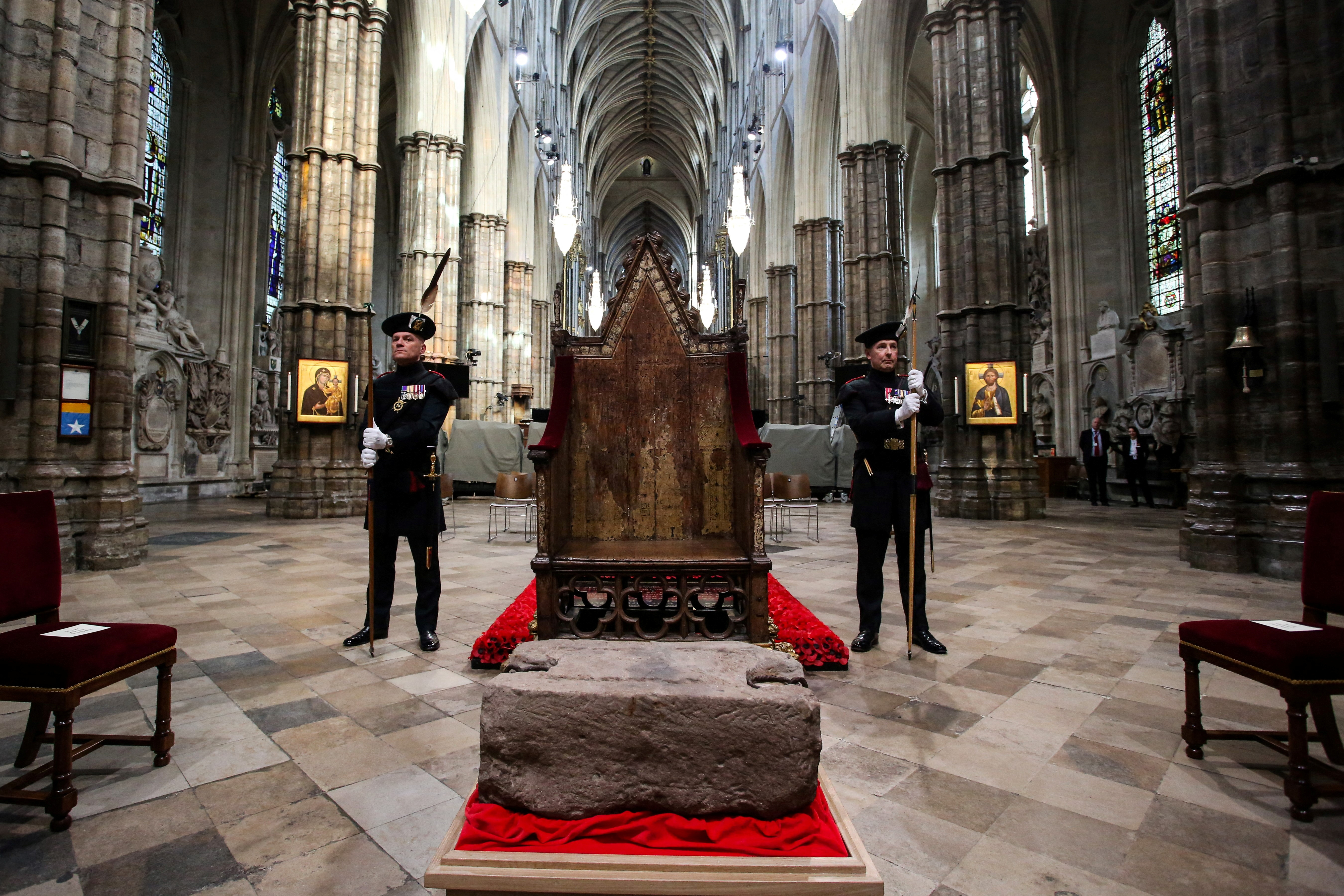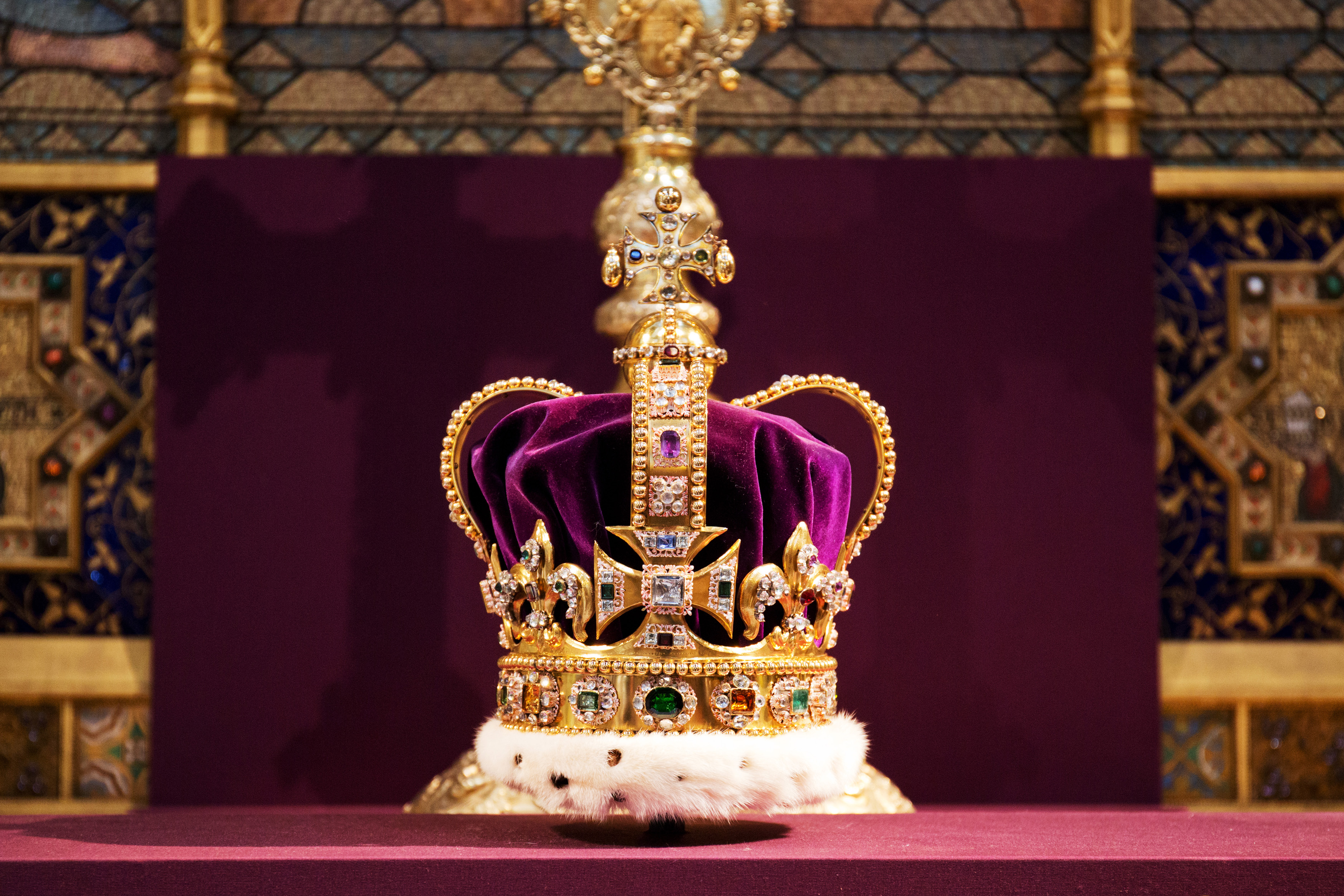King Charles’ Coronation: Each Step of the Ceremony, Its Symbolism & History Explained
The coronation of King Charles III and his wife Camilla as queen on Saturday is the centrepiece of a weekend of events to mark the occasion. Let’s unravel some of the symbolism behind the ceremony:
The King’s Procession
The day begins with the “King’s Procession” — a two-kilometre (1.3-mile) journey from Buckingham Palace in central London to Westminster Abbey.
The couple will travel in the Diamond Jubilee State Coach, drawn by six Windsor Grey horses, and escorted by members of the king’s bodyguard, the Household Cavalry.
The coach, which was lavishly gilded and constructed from wood recovered from historic British buildings to commemorate Queen Elizabeth II’s 60th year as reigning monarch in 2012, has only ever carried the late queen, her late husband Prince Philip, and the odd visiting head of state, as per a Vox report.
They will arrive for the start of the ceremony.
Ceremony and guests
Charles will be crowned in the coronation chair and the service will be led by the highest-ranking cleric in the Church of England, Archbishop of Canterbury Justin Welby.
In 1300, Edward I commissioned the Coronation Chair to house the Stone of Scone, a sandstone block traditionally used in the coronation of Scottish monarchs. In 1296, Edward took it from the Scottish and encased it in the oaken chair, which has since served as the centrepiece of coronation festivities, Vox explains in its report.
(It has also been the site of political protests, with suffragettes bombing it in 1914 and Scottish nationalists seizing the Stone in 1950.) The stone was restored to Scotland by the British government in 1996, with the caveat that it would be returned to England for use in coronations. When Charles takes his seat in the chair (stone included), he will be joining a long line of English and Scottish monarchs.
The ragged and worn chair, with its ancient gilding eroding, is a wordless reminder of how long the British monarchy has been in power – and how much of its authority has come from countries it has colonised, the report says.
About 2,300 people, from foreign leaders and royalty to elected officials and civil society representatives, will be inside the abbey.
The Recognition
The ceremony has largely remained the same for more than 1,000 years.
The king will first be presented to the congregation, who respond with shouts of “God Save King Charles!”. Trumpets sound after each recognition.
The origins of “God Save the Queen” are unknown, but there is no doubt that the words and song, as we know them today, became extremely popular around September of 1745, according to a report by History Today. That month, displays of fealty to the ruling house were in high demand. The Young Pretender, Charles Edward, had defeated Cope at Prestonpans and was preparing to invade England; London was preparing to defend itself and its Hanoverian rulers.
On September 28th, the whole male cast of Drury Lane theatre announced their decision to establish a special unit of the Volunteer Defence Force, demonstrating popular feeling. That evening, they performed Ben Jonson’s The Alchemist. There was one additional item at the end. Mrs. Cibber, Beard, and Reinhold, three of the day’s best vocalists, took the stage and began a special anthem:
“God bless our Noble King,
God Save great George our King …”
The Oath
The Archbishop of Canterbury will administer the Coronation Oath — a legal obligation — framed in the form of questions to the monarch.
The wording has varied over the centuries.
Charles will respond to the questions with his hand on the Bible and then say: “The things which I have here before promised I will perform and keep. So help me God”.
He will also take a separate Accession Declaration Oath in which the monarch declares to be a “faithful protestant”.
The only legal part of the event is the Coronation Oath, in which the monarch promises to govern the peoples of the United Kingdom and the Commonwealth Realms “according to their respective laws and customs.” The language of this oath has altered throughout time to reflect changes in the territorial composition of the United Kingdom and the Commonwealth.
The Anointing
The sovereign, sitting in King Edward’s Chair (the Coronation Chair) under a canopy, is then “anointed, blessed and consecrated” by the archbishop.
Consecrated oil is poured from a gold ampulla and administered using a 12th-century silver-gilt spoon that is the oldest artefact among the Crown Jewels.
The anointing will be “the only part of the ceremony the public will not see”, Welby has said.
The Archbishop pours holy oil from the Ampulla onto the Coronation Spoon and anoints the sovereign’s hands, chest, and head.
The sacred moment occurs prior to the monarch’s investiture and crowning.
The legend is based on the Old Testament, which describes Solomon’s anointing by Zadok the Priest and Nathan the Prophet. It was customarily done to confirm that the sovereign was directly ordained by God. However, since the seventeenth century, the monarch has not been regarded as divine in the same way, as per a repot by Telegraph.
The Investiture
After receiving the sovereign’s orb and sceptres, which represent their spiritual and temporal powers, the monarch has the St Edward’s Crown placed on their head.
The solid gold crown set with gemstones, such as rubies and sapphires, is only worn when the monarch is crowned.
It was made for the Coronation of Charles II in 1661 as a replacement for the medieval crown melted down in 1649, after the execution of Charles I. The lost medieval crown dated back to the 11th century and belonged to the royal saint, Edward the Confessor.
St Edward’s Crown was last used for crowning Queen Elizabeth II in 1953.
The crown has “a very simple structure,” historian Anna Keay told the Court Jeweller in a report, with a sequence of 22-carat gold components (“the headband, the crosses and fleur-de-lys and arches”) joined together in 1661 to form the piece’s fundamental frame. “The settings for the jewels were then fixed through this frame from behind,” Keay says. A gold collar kept each gem in place, and the stones were set in clusters encircled by white enamel mounts in the shape of acanthus leaves.” Inside the crown, which has an ermine-trimmed base, is a velvet hat.
The Enthronement
The monarch moves to the throne.
Traditionally, the archbishop, the heir to the throne followed by royal dukes and hereditary peerage kneel and swear allegiance.
But heir apparent Prince William will be the only royal duke to pay homage to Charles. William is Duke of Cornwall as well as Prince of Wales.
And replacing the homage of peers, the Archbishop of Canterbury will invite all people from wherever they are watching or listening to pledge allegiance to the new sovereign, a historic first.
Camilla will then be crowned separately in a similar but simpler ceremony.
The Coronation Procession
The king and queen will return to Buckingham Palace in the Gold State Coach in a larger ceremonial “Coronation Procession”.
The coach, first used in 1762, weighs four tonnes and will be drawn by eight Windsor Greys, at walking pace.
They will be joined by other members of the royal family. Some 7,000 British and Commonwealth troops in full regalia are taking part in the parades.
At the palace, they will appear on the balcony at about 2:15 pm to greet the crowd and watch a Royal Air Force fly-past.
AFP contributed to this report
Read all the Latest Explainers here
For all the latest world News Click Here




